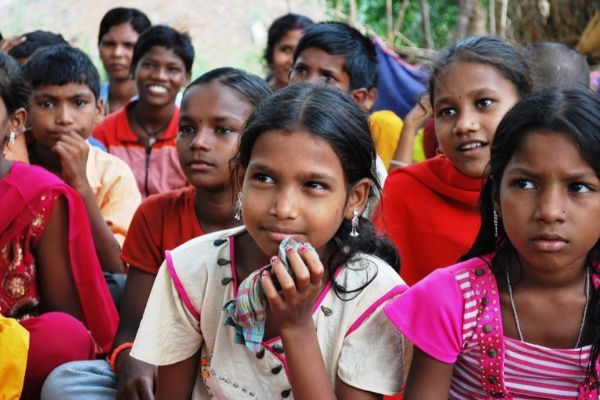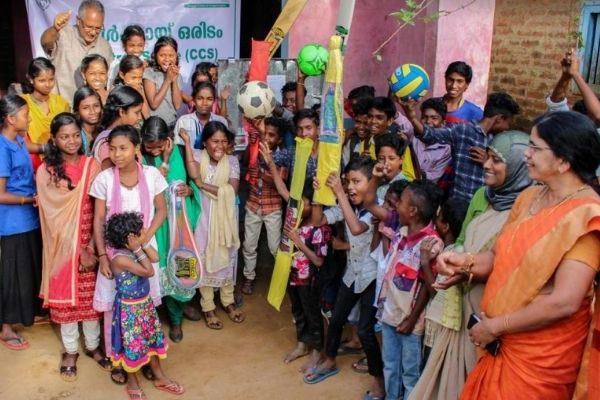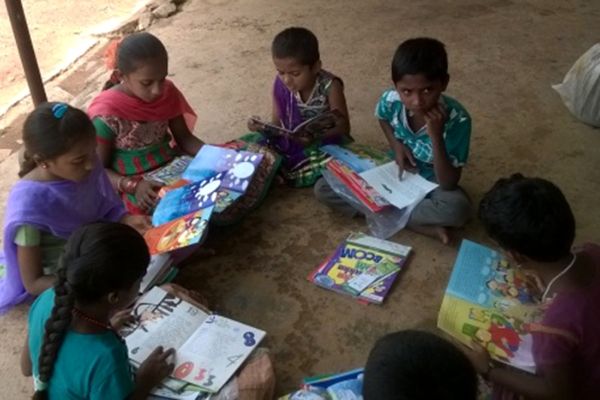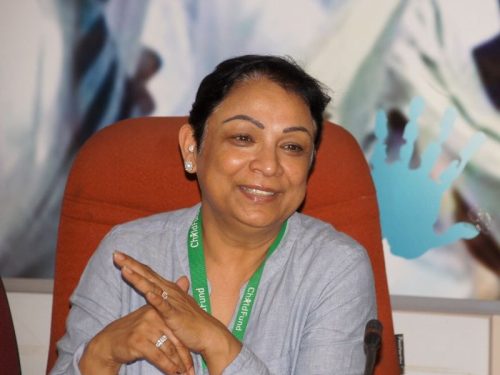ChildFund’s Neelam Makhijani on saving girl child & women empowerment
A child development organisation representing the voice of deprived, excluded and vulnerable children, ChildFund India (estb. 1951) annually reaches out to nearly 3 million children, youth, and their families from 3200 communities in 85 districts across 15 states in India, through their various programmes and partnerships.
With a vision to create an India “where children lead a dignified life and achieve their full potential” and to help children living in poverty develop into future leaders who can bring lasting positive change to their communities, the NGO’s goal is to carefully nurture infants and young children to become secure and healthy, educated and confident, skilled and involved youths of tomorrow.
EducationWorld spoke with Neelam Makhijani, country director & CEO ChildFund India on the NGO’s initiatives and how it aims to empower women and save the girl child.
What are ChildFund’s global initiatives with focus on Asia-India strategy?
ChildFund’s programmes across the globe are based on similar values and operating principles and the impact is measured through a global balanced scorecard. However, each country contextualises the programmes to its local context focusing on issues that matter the most. ChildFund works with partners in communities around the world to change the underlying conditions that prevent children from realising their rights.
ChildFund’s Destination 2020 strategy’s overarching aim for children is: More children live in conditions that enable optimum development at each stage of their lives, including being protected from abuse, neglect, exploitation, and violence, and new and improved giving and engagement experiences help retain current supporters and attract more donors to its mission.
ChildFund has been striving to achieve these key objectives through its unique programmes worldwide:
- Deepen its well-being and protection programmes for children.
- Deliver transformative giving experiences for donors.
- Cultivate a workplace culture of innovation for value and impact.

Source: ChildFund India
What exactly is the aim of the Khilta Bachpan Campaign?
ChildFund India’s “Khilta Bachpan” campaign aims to use the medium of arts and sports to change the lives of millions of children and youth across the country. It promotes cognitive, social and emotional learning, and encourages creative expression in children. Through this intervention, children aged 6-18 years in many underprivileged and deprived communities of India are provided with access to art education and sports. It helps children to inculcate the appreciation for the richness and diversity of arts in the country, and gives them a platform and an opportunity to engage, express and empower.
ChildFund India has worked towards preventing child trafficking, child labour as well as providing education and career guidance to the girl child. Could you take us through the process of how you are handling/addressing such situations?
To protect children various forms of violence including abuse, neglect, and exploitation, and help them achieve optimum development milestones at each stage of their lives, ChildFund has aligned all its programme models with the over-arching child protection objectives, integrating advocacy and WHO’s INSPIRE strategy. To address areas of risk and vulnerabilities of children across all life stages, ChildFund undertakes two key approaches:
Strengthening community-based child protection mechanisms, which encompasses preventive aspects and creates a sustainable and safe environment for children.
The other is networking and advocacy on child protection. To contribute and strengthen national civil society initiatives on ending violence against children through consortia and alliances, the programme adopts a multi-pronged approach of direct interventions with children, families and the communities that require strengthening of the accountability of role holders and duty bearers. To assess the gaps and ensure corrective approaches towards child protection, the programme works with Apex child protection role holders.
With regard to education and career guidance to girls, ChildFund India supports girls with quality completion of the schooling cycle and pursuing higher education. It has a focused programme to address the need for secondary and tertiary education to empower youth, especially girls from poor and marginalised families. To address the barriers to higher education, the programme provides academic, various life-skill support, financial and other related support through many initiatives.
Women’s empowerment is a rising issue in India, especially in rural areas. How do you think it can be addressed?

Source: ChildFund India
The concept of women empowerment was first introduced at the International Women’s conference in Nairobi in 1985. Sustainable Development Goals (SDG) launched in 2015 and to be achieved by 2030, lay emphasis on the importance of women empowerment.
ChildFund strongly believes that providing voice and equal opportunities to girls and women can bring the change we wish to see. Our organisation has been investing strategically in breaking barriers and providing opportunities to the larger goal of women empowerment and gender equality. This issue is addressed at all levels – from young girls to women. Under its various programme models, ChildFund supports education of both girls and boys, with special provision of life skills. Further, all the education programmes implemented by the organisation aim at overcoming the social and physical barriers to girl child education, and annually impacting lives of over 1,50,000 girls across the country.
To empower women financially and socially, ChildFund promotes employment and entrepreneurship opportunities through skill development and placement support; empowerment of youth collectives through life skill development; and youth engagement and leadership development to bridge the knowledge gap, ensure protection mechanism and community empowerment. ChildFund has been working in 15 states by providing employability and entrepreneurship training that combines market-based skills training, entrepreneurship development, financial literacy and life skills training to underprivileged youth.
The organisation also works with women’s groups by helping them develop into Self Help Groups and federations. While working with the communities, women are educated on the skills of decision making, advocating and participating in the various forums at the village level. Many women in the project areas of ChildFund have become vocal leaders in their communities. ChildFund works with these young women and helps them transform into entrepreneurs by supporting them with trainings and resources to set-up their own business.

Source: ChildFund India
What are the upcoming/recent initiatives of ChildFund?
Lately, ChildFund India has been experiencing many of its firsts – the world’s first domestically funded Sustainable Development Goals Bond, titled as Women Holistic Empowerment and Enhanced Livelihood (WHEEL) is being implemented reaching nearly 5000 women with support from diverse stakeholders including HSBC and BPCL. In association with USAID and IPE Global, ChildFund has initiated implementation program towards improving nutritional status and treatment of 10,000 tuberculosis patients in Madhya Pradesh through Innovative Financing, ‘Khilta Bachpan’ promoting Arts for Happy Childhood reaching over 100,000 children, released Child Rights in India – An Unfinished Agenda report prepared by Joining Forces for Children – India, an alliance of the six leading child-focused organisations – ChildFund India, Plan India; Save the Children, India; SOS Children’s Villages of India; Terre des hommes and World Vision India, initiated a huge project to Strengthen Civil Society organizations towards fostering women empowerment of 15,000 women in Eastern Uttar Pradesh, India with funding from the European Union and support from Barnfonden and many more.
Also read: National Girl Child Day: Interview with social entrepreneur Shivangi Singh

















Add comment